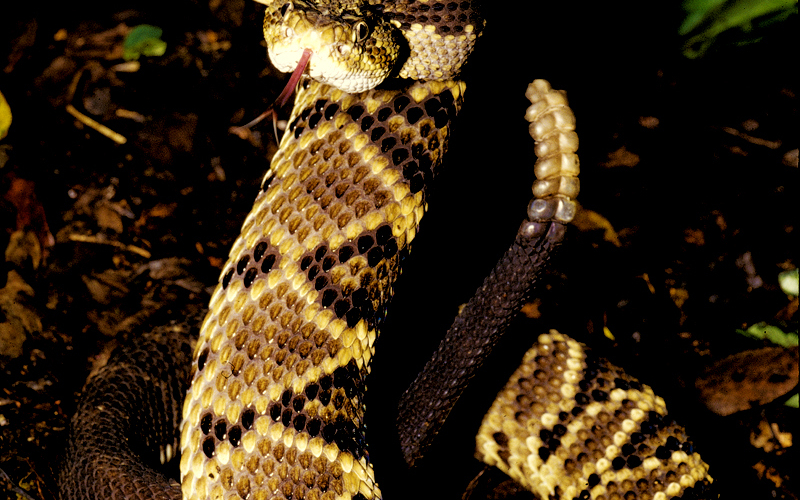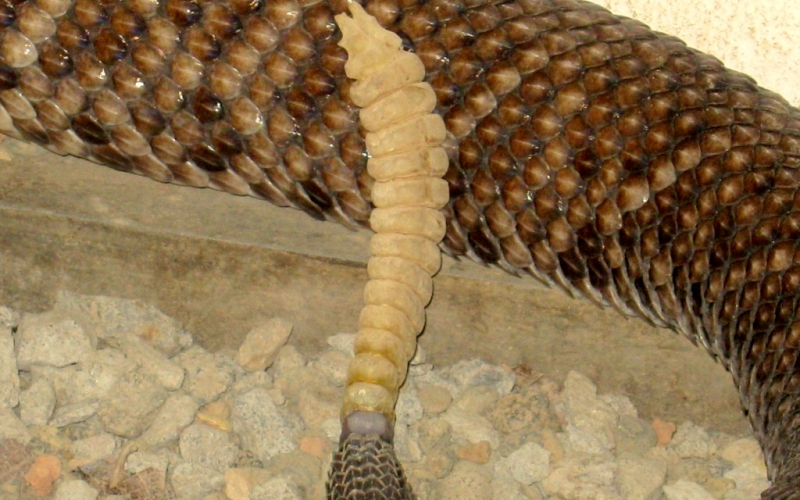Crotalus simus
Nombre científico: Crotalus simus
Familia: Viperidae Family
Nombre común: Central American rattlesnake
The Central American Rattlesnake is large, it can grow up to 180 cm, but the average adult ranges between 100 and 120 cm. It has a robust body, a relatively small head, not too differentiated from the neck, a round snout and an evident spinal crest on the first third of the body. The dorsal scales are strongly keeled and protuberant, which gives it a rough appearance. It has a light brown to cream-colored base, with an adorned pattern of dark rhomboidal designs on the back. Its most relevant characteristic is the presence of a rattle. This structure consists of a series of hollow, interlocked segments, which shake against each other when the snake vibrates its tail, producing the strong defensive sound so characteristic of the Rattlesnake.
For a long time the tropical Rattlesnake was considered a species widely found from the south of Mexico to Argentina; but, today this idea has changed due to the recent evidence that in fact, this is a group of related species. In Costa Rica, the species known as Crotalus simus, can be found, which is a species distributed throughout the dry regions of Central America.
The Rattlesnake lives in the low lands of the provinces of Guanacaste and the north of Puntarenas, where it is relatively common on the edges of forests and unperturbed areas.





